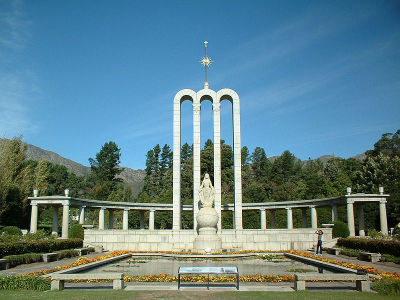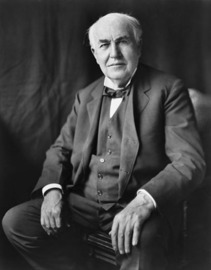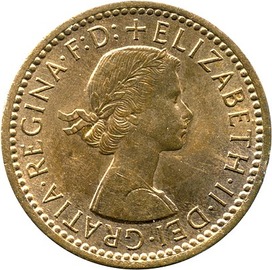December 31 is:
Widely known as New Year’s Eve
On the seventh day of Christmas my true love gave to me . . . . seven swans a-swimming.
For the Catholic interpretation of the significance of each day of Christmas, see: crosswalk.com
 On December 31, 1687 the first organized group of Huguenots set sail from the Netherlands to the Dutch East India Company post at the Cape of Good Hope. The largest portion of the Huguenots to settle in the Cape arrived between 1688 and 1689 in seven ships as part of the organized migration, but quite a few arrived as late as 1700; thereafter, the numbers declined and only small groups arrived at a time. Many of these settlers were settled in an area that was later called Franschhoek (Dutch for French Corner), in the present-day Western Cape province of South Africa. A large monument to commemorate the arrival of the Huguenots in South Africa was inaugurated on 7 April 1948 at Franschhoek, where the Huguenot Memorial Museum was erected in 1957.
On December 31, 1687 the first organized group of Huguenots set sail from the Netherlands to the Dutch East India Company post at the Cape of Good Hope. The largest portion of the Huguenots to settle in the Cape arrived between 1688 and 1689 in seven ships as part of the organized migration, but quite a few arrived as late as 1700; thereafter, the numbers declined and only small groups arrived at a time. Many of these settlers were settled in an area that was later called Franschhoek (Dutch for French Corner), in the present-day Western Cape province of South Africa. A large monument to commemorate the arrival of the Huguenots in South Africa was inaugurated on 7 April 1948 at Franschhoek, where the Huguenot Memorial Museum was erected in 1957.
1695 – A window tax was imposed in England, causing many householders to brick up windows to avoid the tax.
December 31, 1857 – Queen Victoria chose Ottawa, then a small logging town, as the capital of Canada.
According to Wikipedia:
On New Year’s Eve, December 31, 1857, Queen Victoria as a symbolic and political gesture was presented with the responsibility of selecting a location for the permanent capital of the Province of Canada… The ‘Queen’s choice’ turned out to be the small frontier town of Ottawa for two main reasons: Ottawa’s isolated location in a back country surrounded by dense forest far from the American border and situated on a cliff face would make it more defensible from attack. Ottawa was located approximately midway between Toronto and Kingston in (Canada West) and Montreal and Quebec City in (Canada East). Despite Ottawa’s regional isolation it had seasonal water transportation access to Montreal over the Ottawa River and to Kingston via the Rideau Waterway. By 1854 it also had a modern all season Bytown and Prescott Railway that carried passengers, lumber and supplies the 82 kilometre distance to Prescott on the Saint Lawrence River and beyond. The smaller size of the town also made it less prone to rampaging politically motivated mobs, as had happened in the previous Canadian capitals. The government already owned the land that would eventually become Parliament Hill which they thought would be an ideal location for building the Parliament Buildings. Ottawa was the only settlement of any substantial size that was already located directly on the border of French populated former Lower Canada and English populated former Upper Canada thus additionally making the selection an important political compromise. Queen Victoria made her ‘Queen’s choice’ very quickly just before welcoming in the New Year.
1862 – American Civil War: Abraham Lincoln signed an act that admitted West Virginia to the Union, thus dividing Virginia in two. West Virginia was admitted as a state June 20, 1863. See for a discussion on why the two areas split.
 Thomas Edison demonstrated incandescent lighting to the public for the first time in 1879. (2012 – Incandescent bulbs are essentially outlawed.)
Thomas Edison demonstrated incandescent lighting to the public for the first time in 1879. (2012 – Incandescent bulbs are essentially outlawed.)
1907 – The first New Year’s Eve celebration to be held in Times Square was in 1907, (then known as Longacre Square) in New York, New York. (By 1872, the area had become the center of New York’s carriage industry. The area not having previously been named, the city authorities called it Longacre Square after Long Acre in London, where the carriage trade in that city was centered and which was also a home to stables.) Times Square was renamed in April 1904 after The New York Times moved its headquarters to the newly erected Times Building.
 The farthing coin ceased to be legal tender in the United Kingdom in 1960. The farthing represented 1/4 of a penny (or a “fourthing”).
The farthing coin ceased to be legal tender in the United Kingdom in 1960. The farthing represented 1/4 of a penny (or a “fourthing”).
The Marshall Plan expired in 1961 after distributing more than $12 billion U.S. dollars in foreign aid to rebuild Europe.
1999 – The United States Government handed control of the Panama Canal (as well all the adjacent land to the canal known as the Panama Canal Zone) to Panama. This act complied with the signing of the 1977 Torrijos–Carter Treaties. The Torrijos–Carter Treaties (Spanish: Tratados Torrijos-Carter) are two treaties signed by the United States and Panama in Washington, D.C., on September 7, 1977, which superseded the Hay–Bunau-Varilla Treaty of 1903. The treaties guaranteed that Panama would gain control of the Panama Canal after 1999, ending the control of the canal that the U.S. had exercised since 1903. The treaties are named after the two signatories, U.S. President Jimmy Carter and the Commander of Panama’s National Guard, General Omar Torrijos.

Christmas Music:
Several years ago I worked on a project to celebrate the music in my life. Nothing says Christmas like the carols and songs heard only at this time of year. And nothing says New Years like Robert Burns’ Auld Lang Syne.
Should auld acquaintance be forgot,
And never brought to mind?
Should auld acquaintance be forgot,
And auld lang syne.
Chorus
For auld lang syne, my dear,
For auld lang syne.
We'll take a cup o' kindness yet,
For auld lang syne.
And surely you’ll buy your pint cup!
and surely I’ll buy mine!
And we’ll take a cup o’ kindness yet,
for auld lang syne.
Chorus
We two have run about the slopes,
and picked the daisies fine;
But we’ve wandered many a weary foot,
since auld lang syne.
Chorus
We two have paddled in the stream,
from morning sun till dine;
But seas between us broad have roared
since auld lang syne.
Chorus
And there's a hand, my trusty friend!
And give's a hand o' thine!
And we'll take a cup of kindness yet,
For auld lang syne.
Chorus
